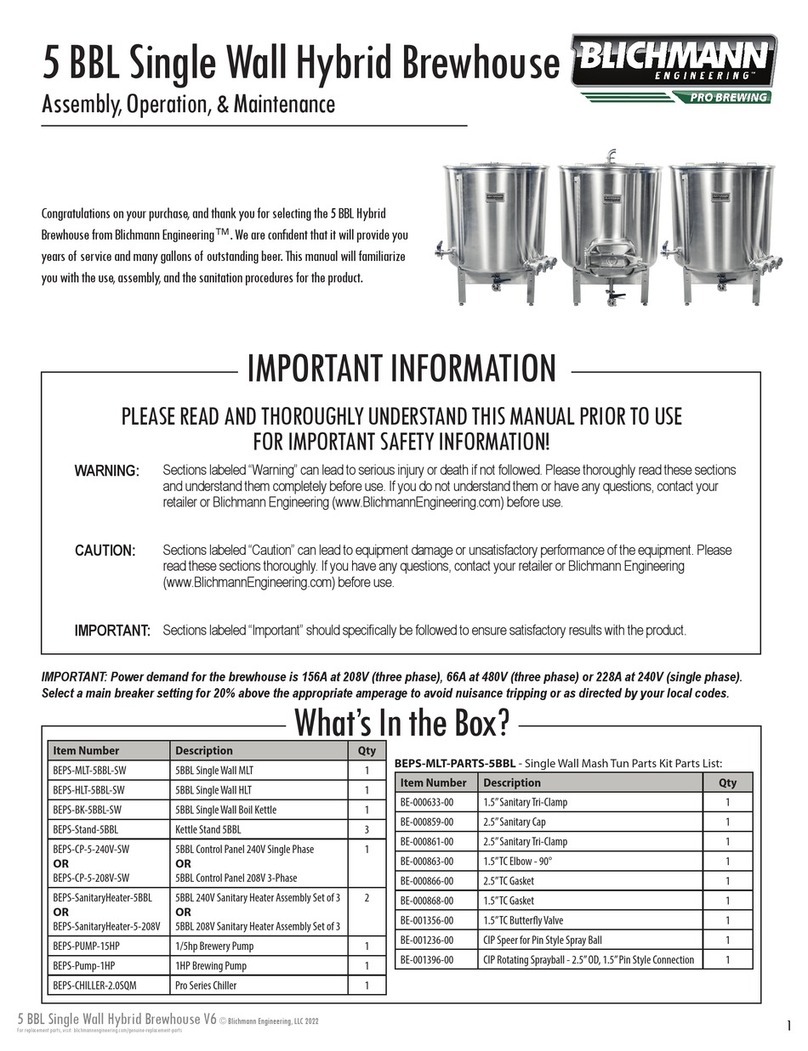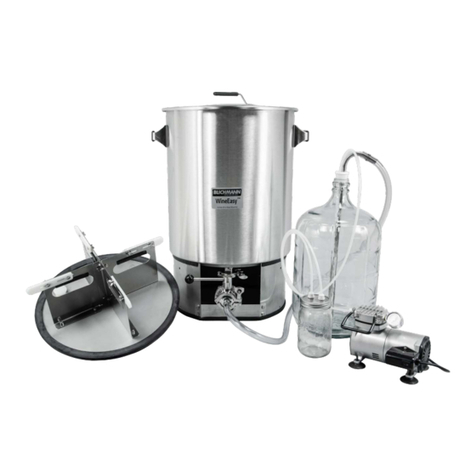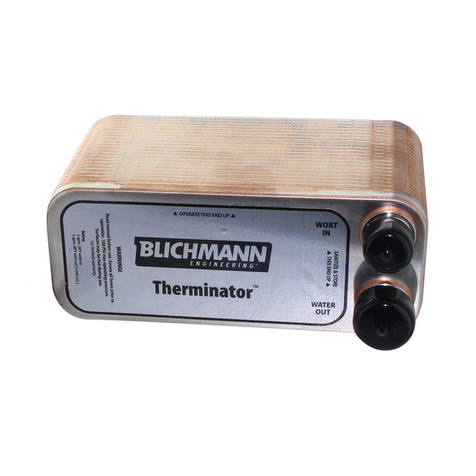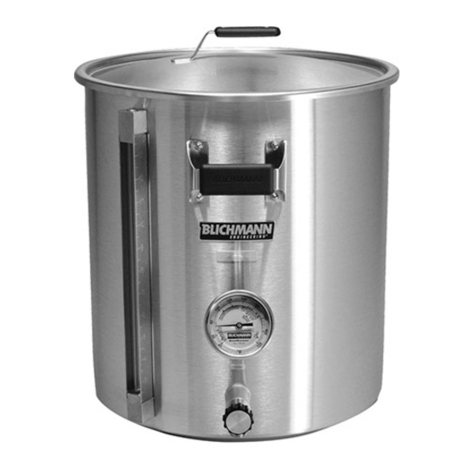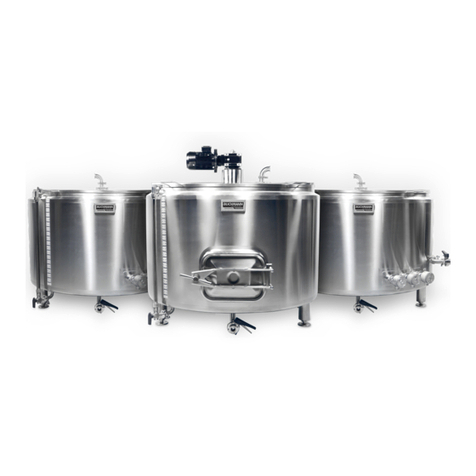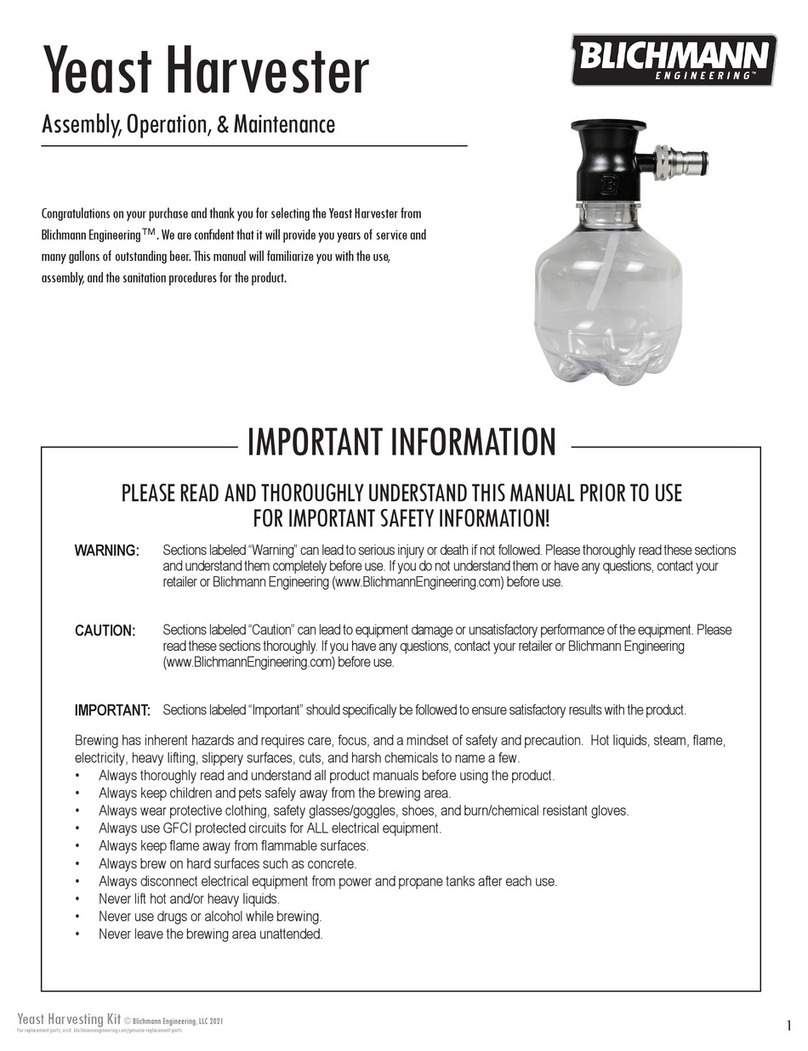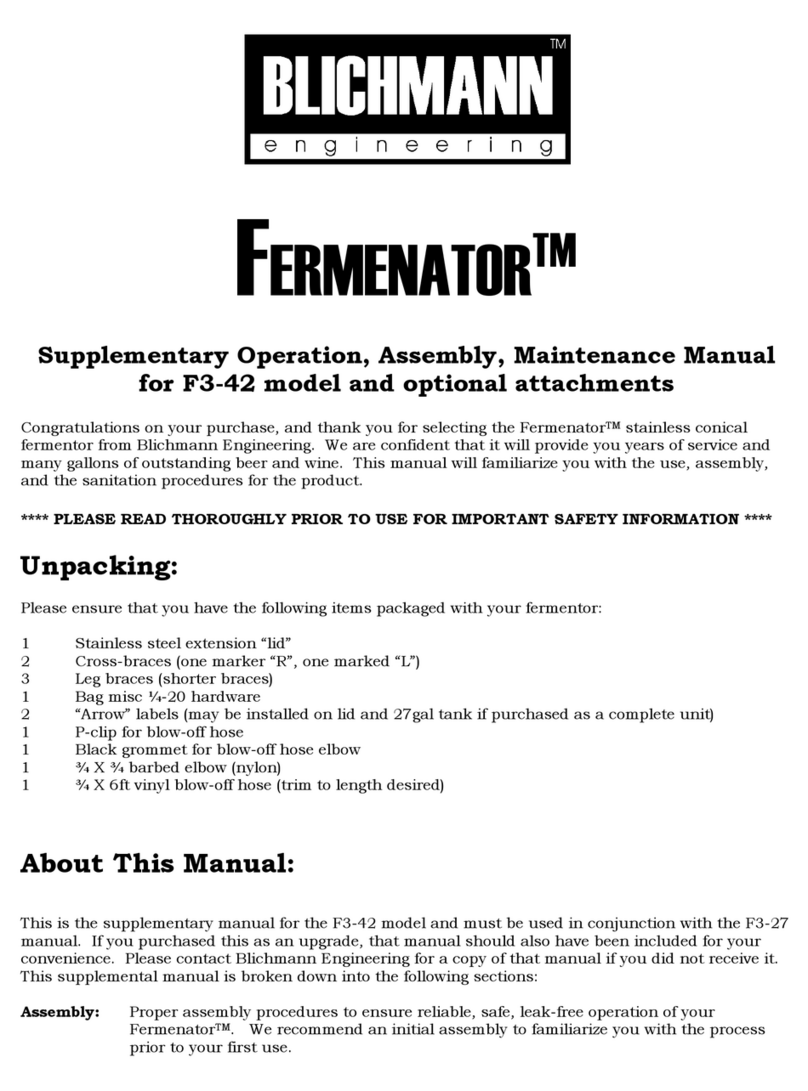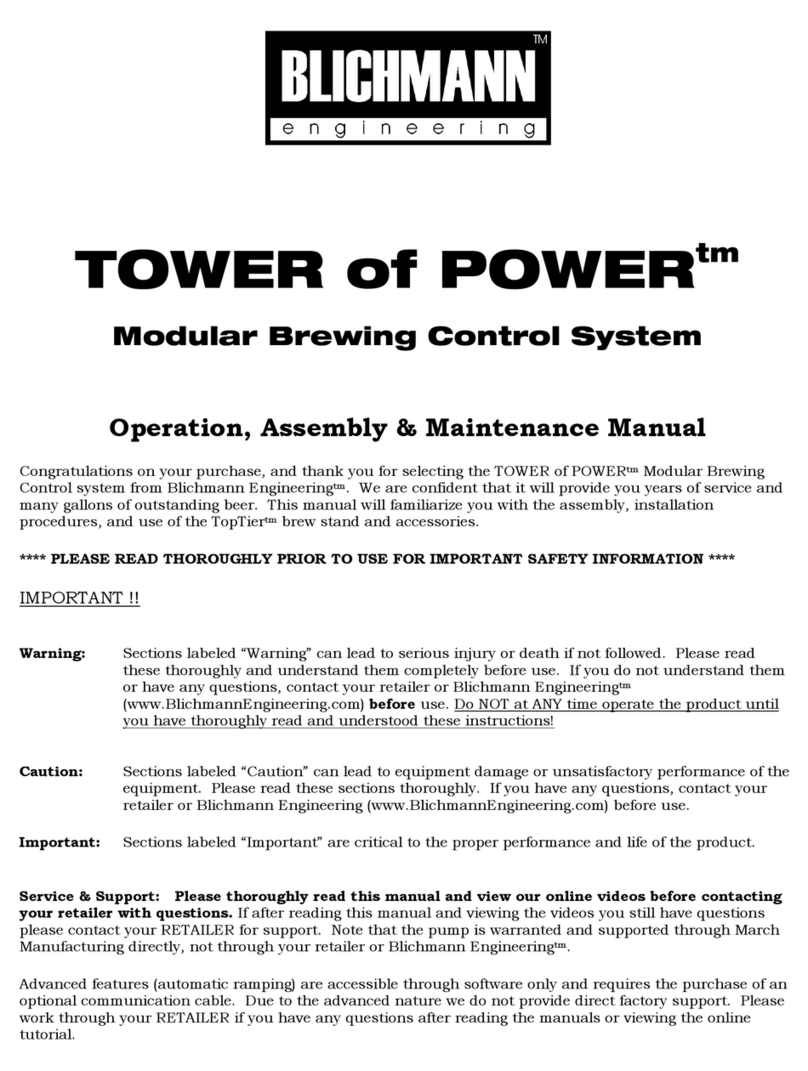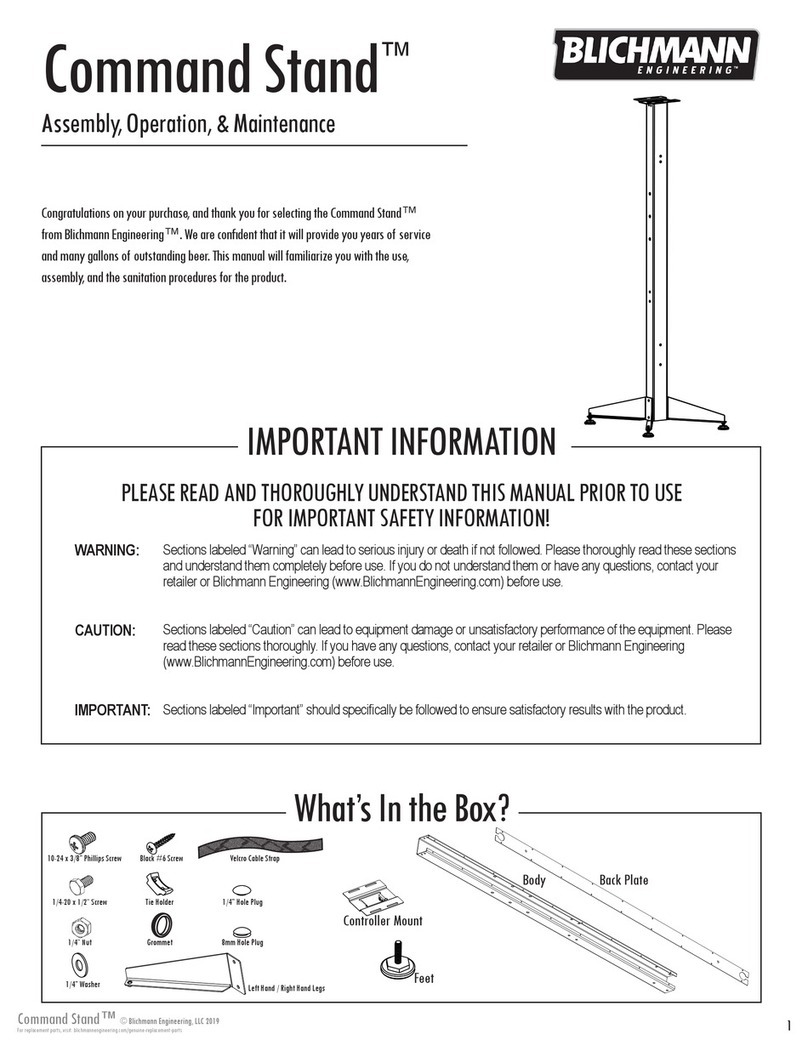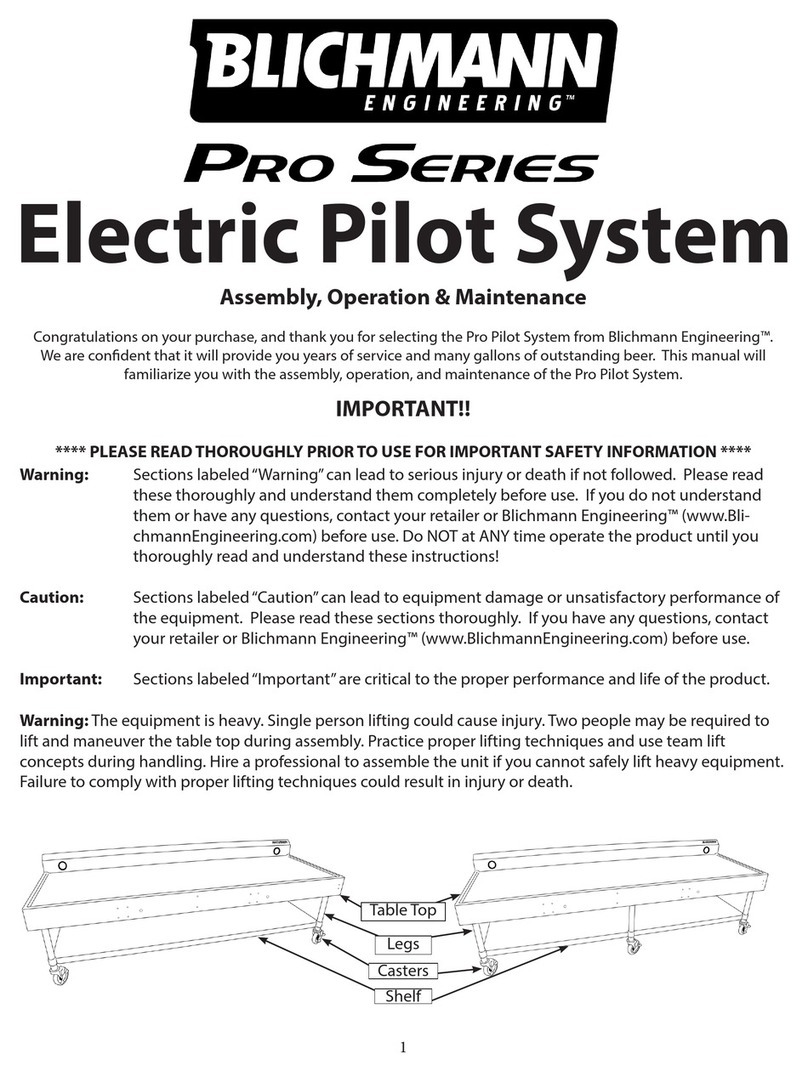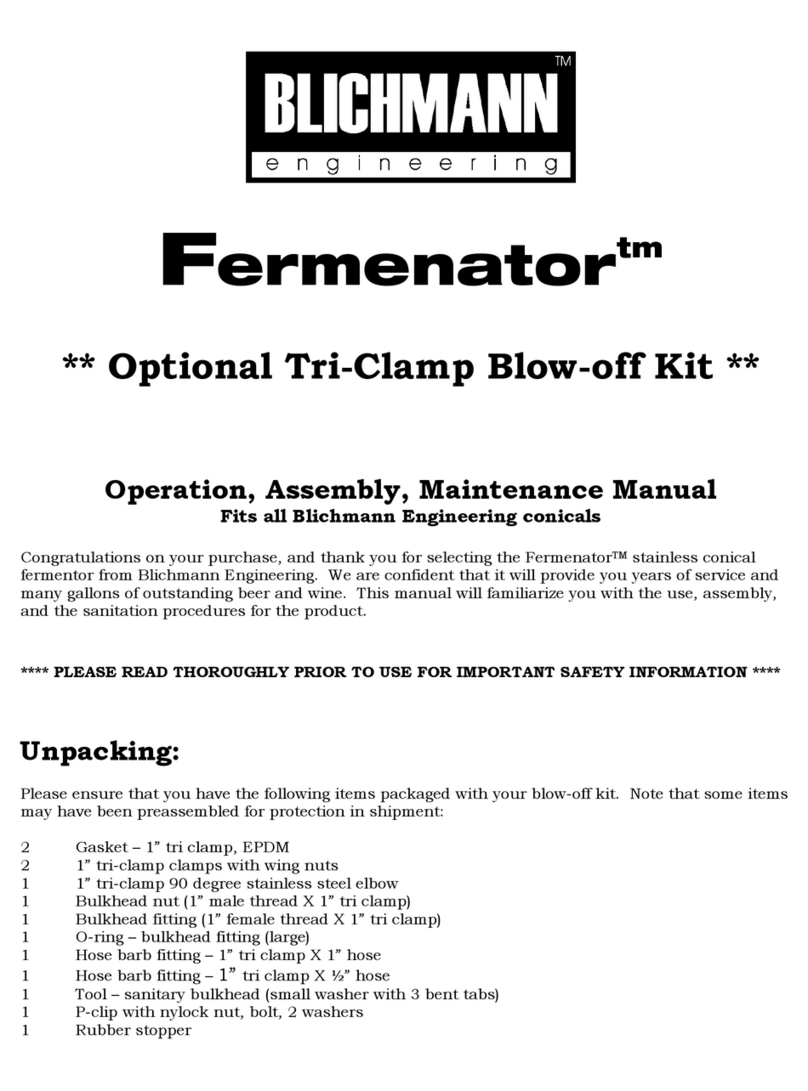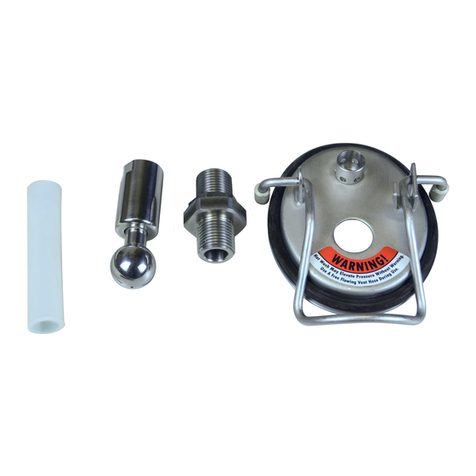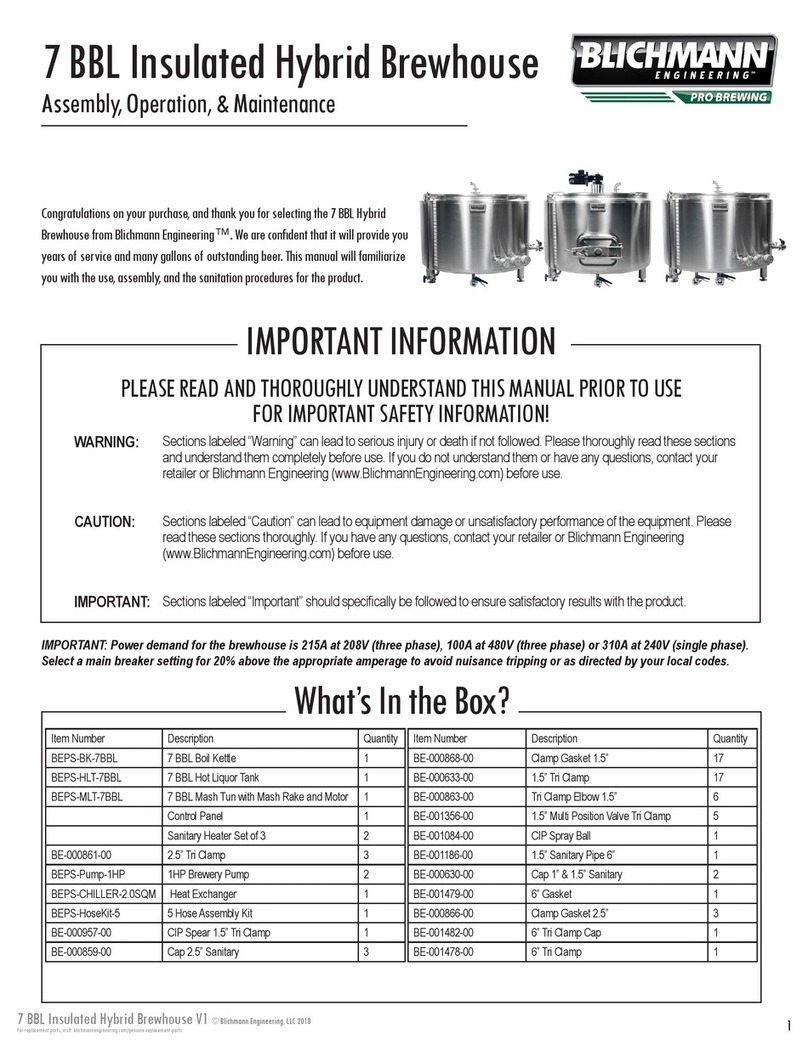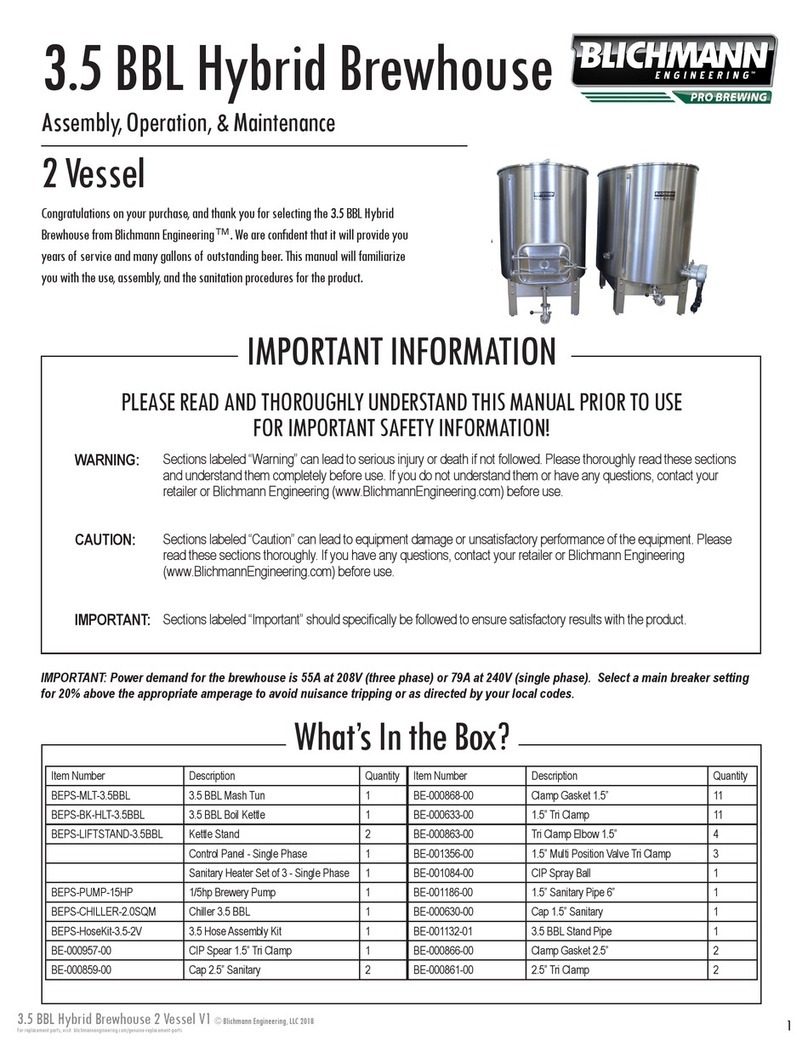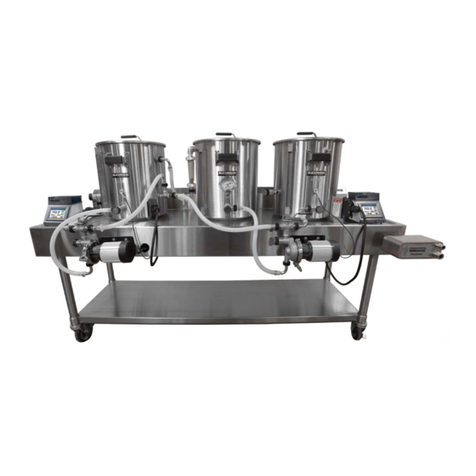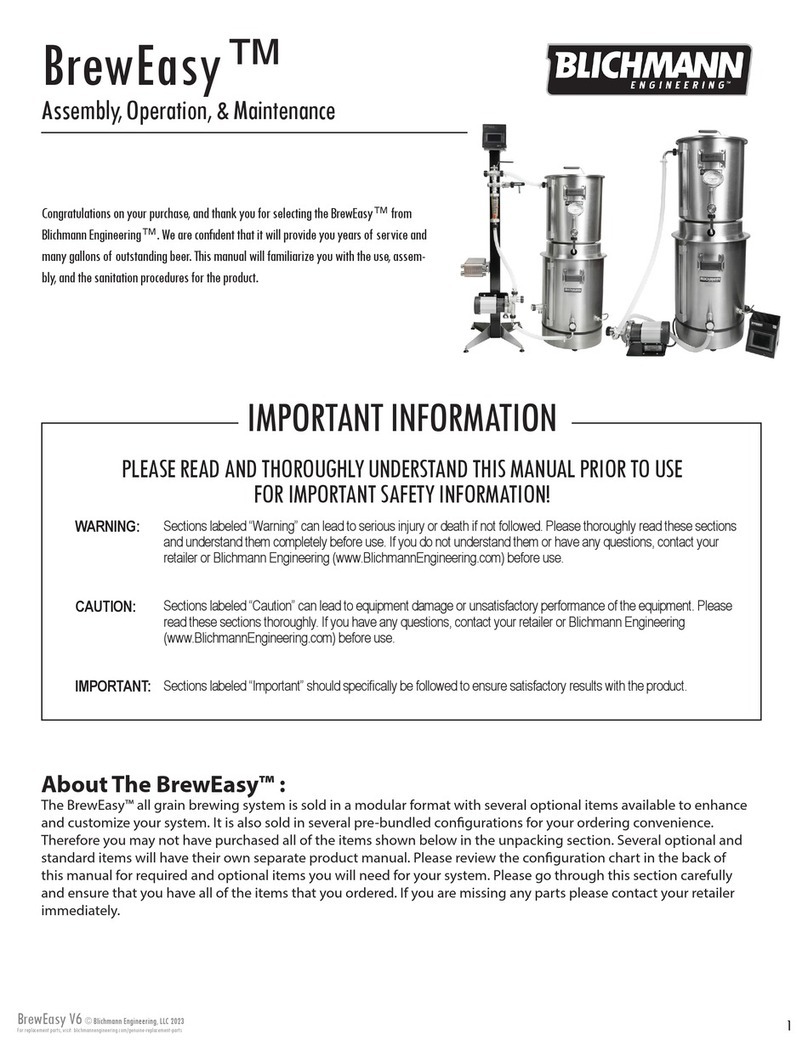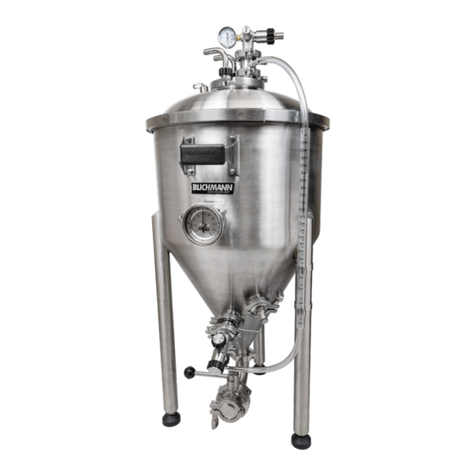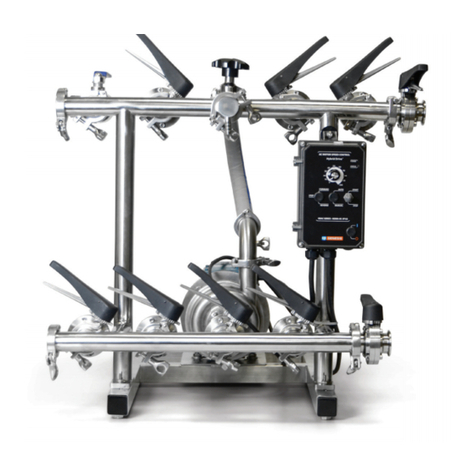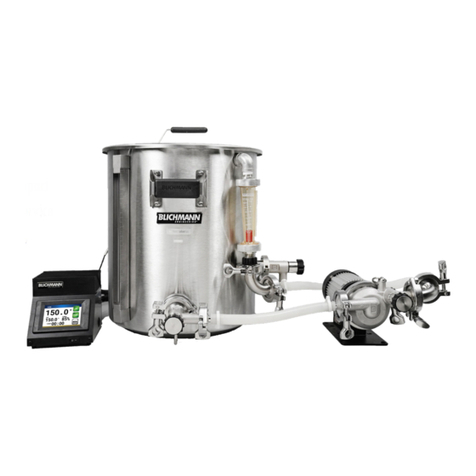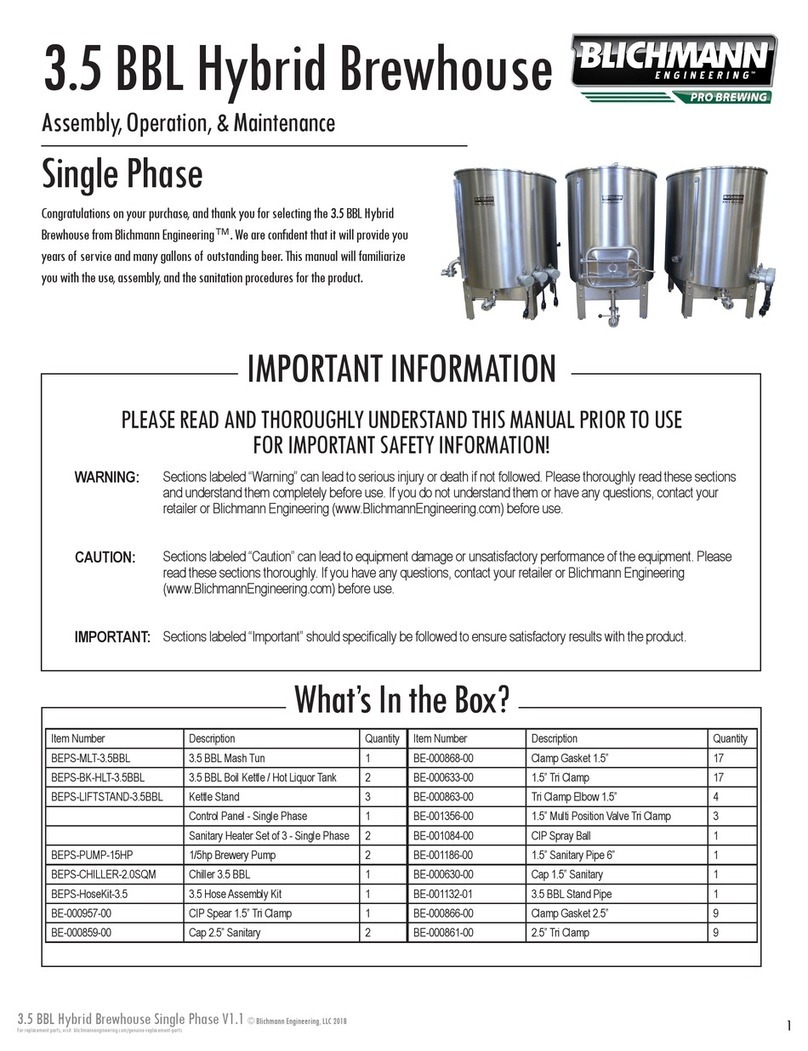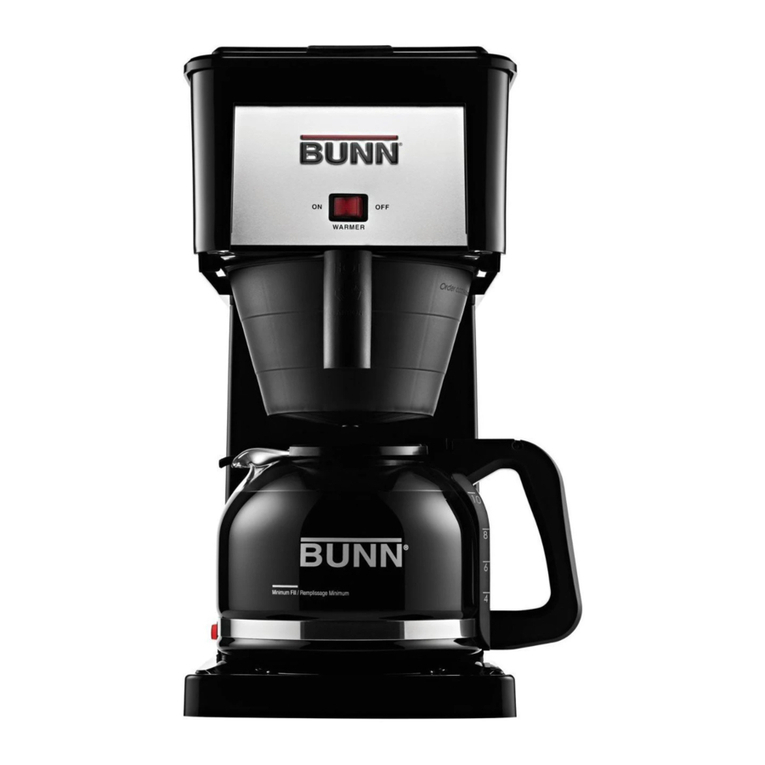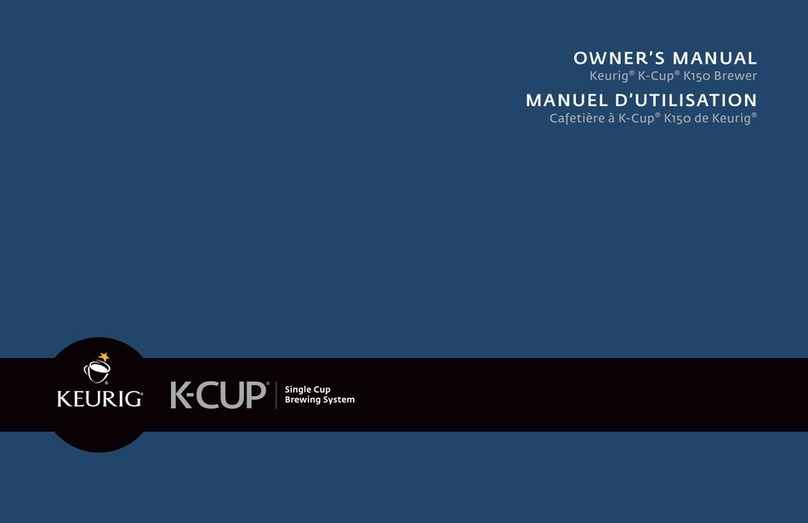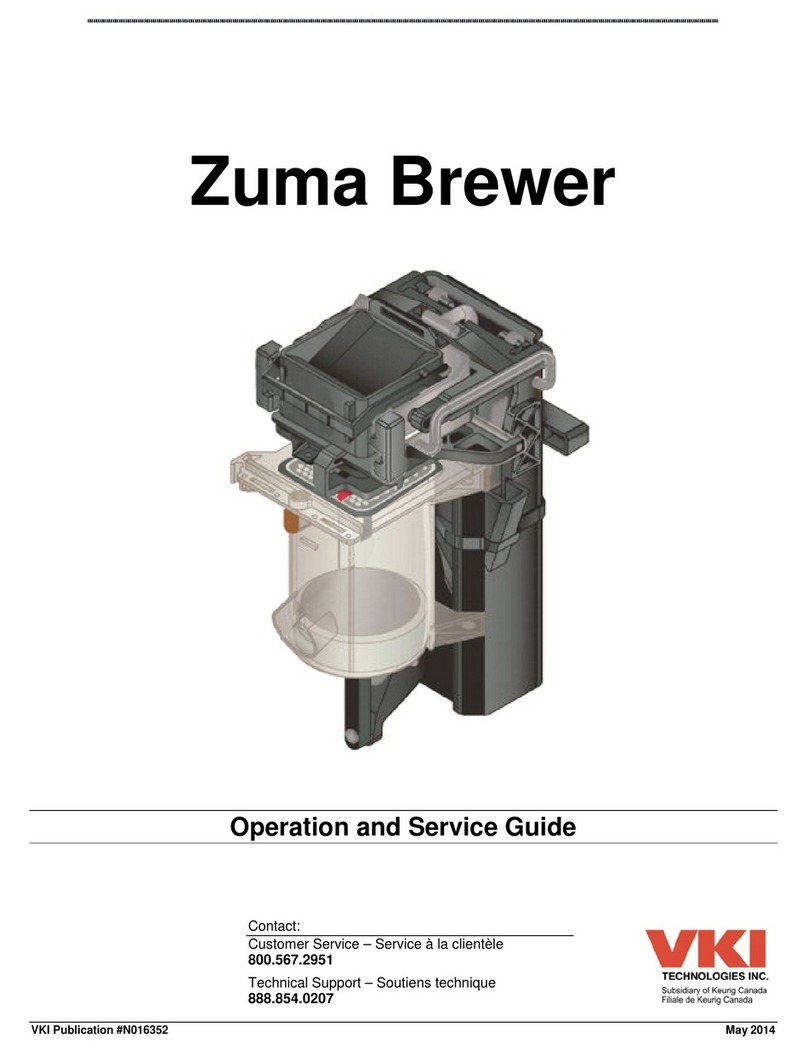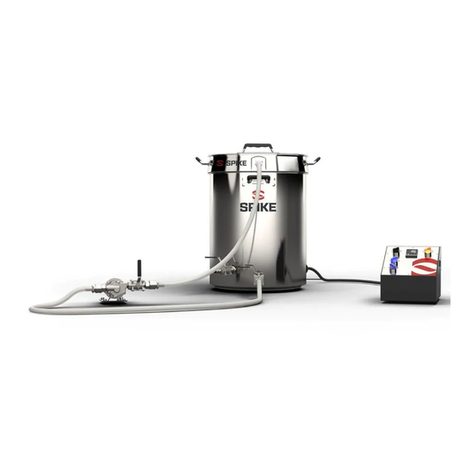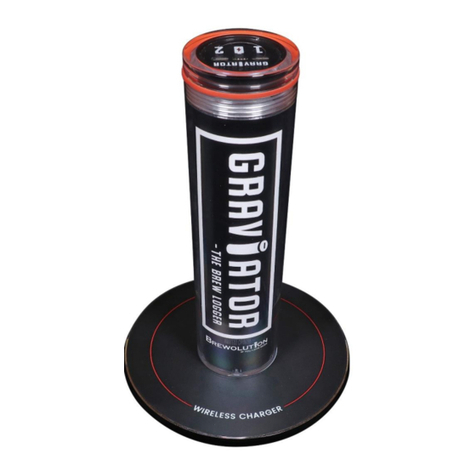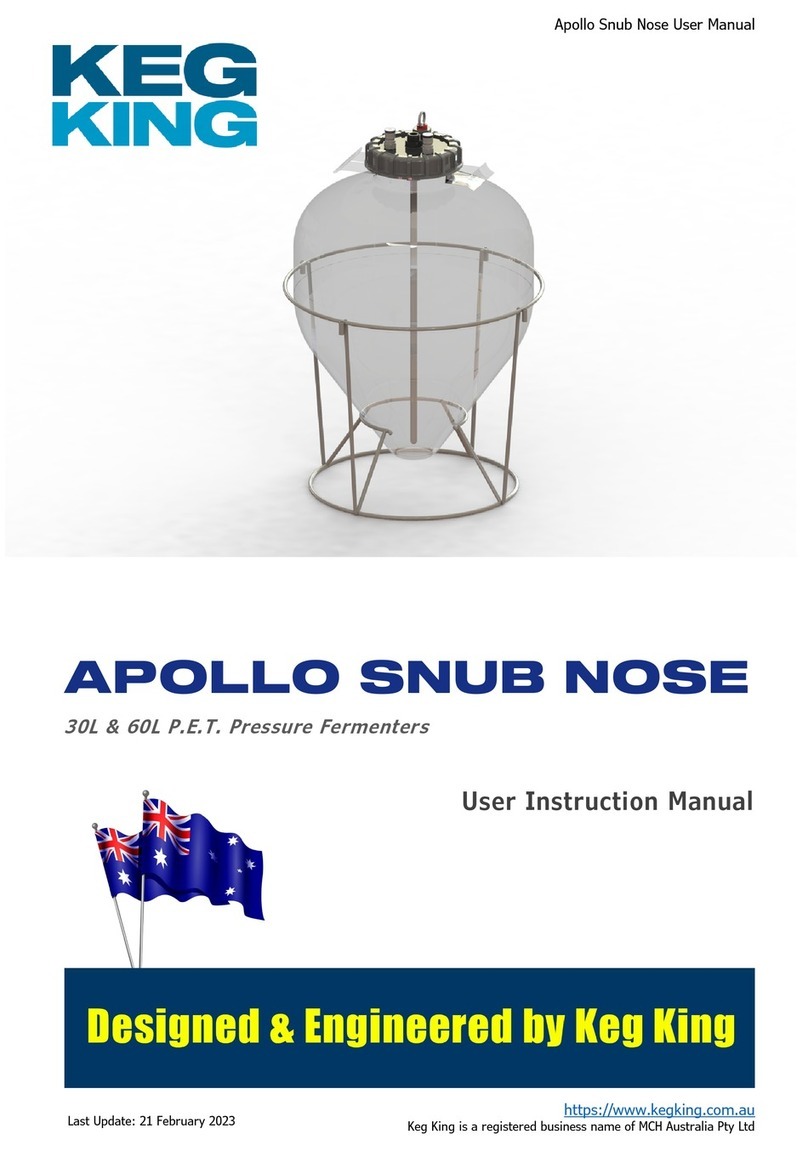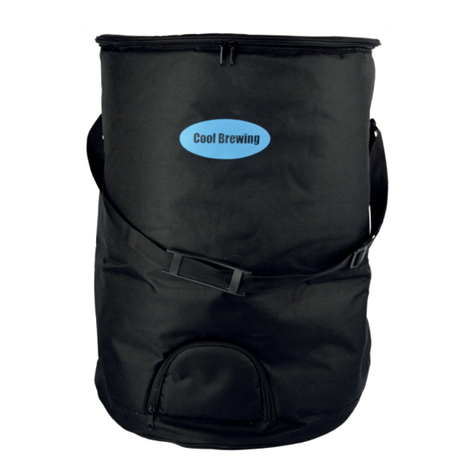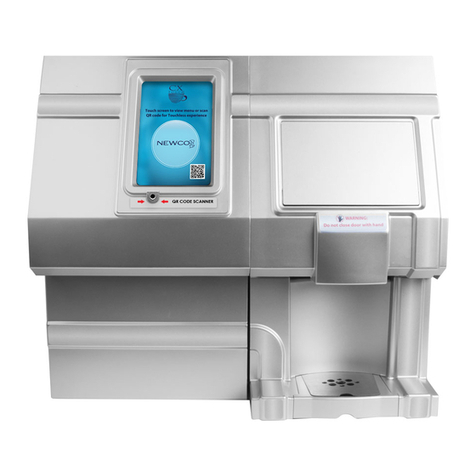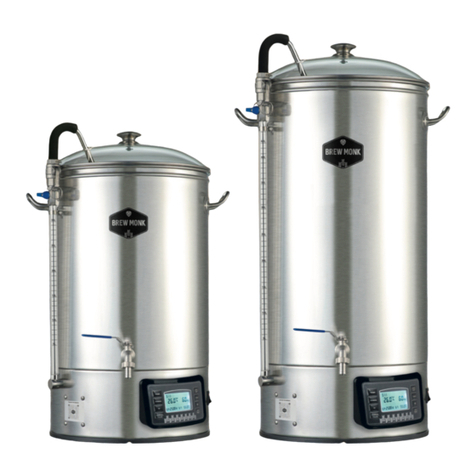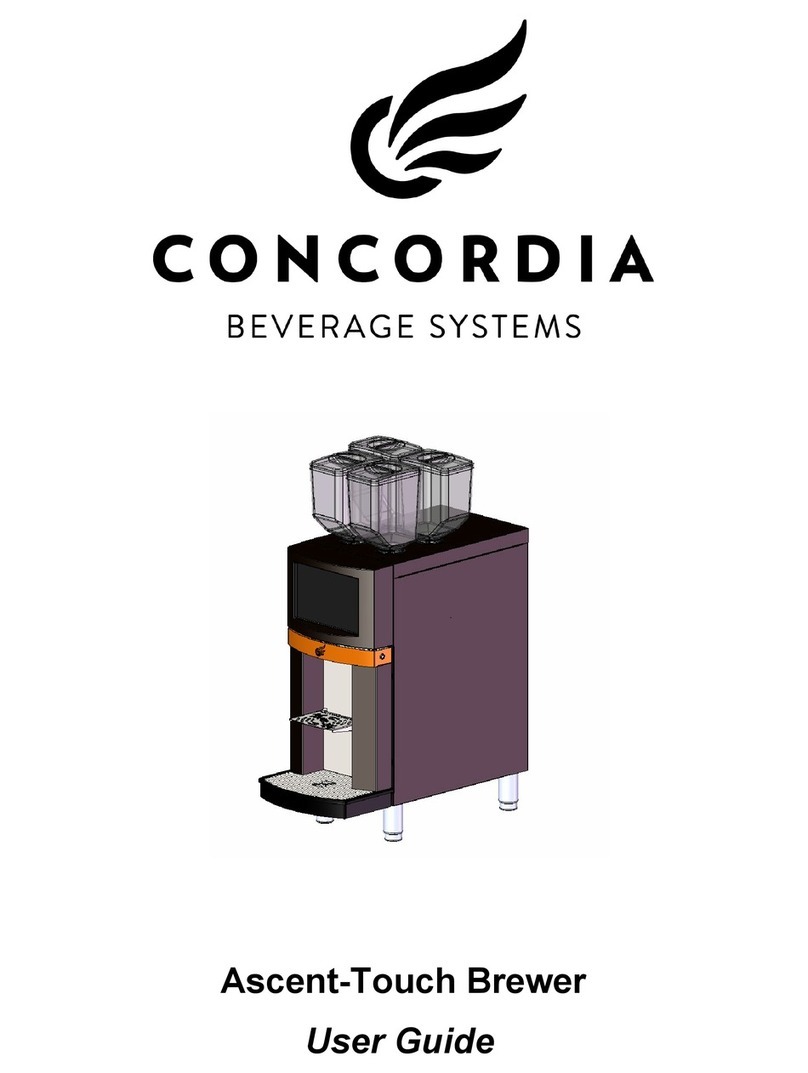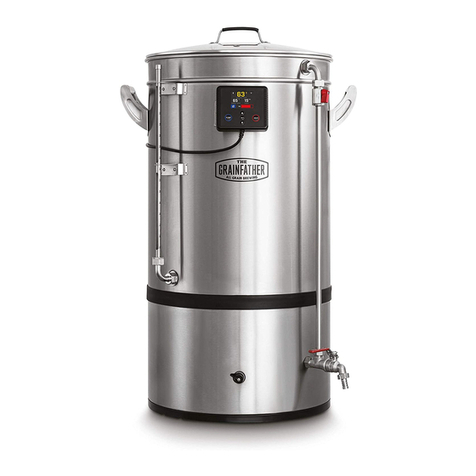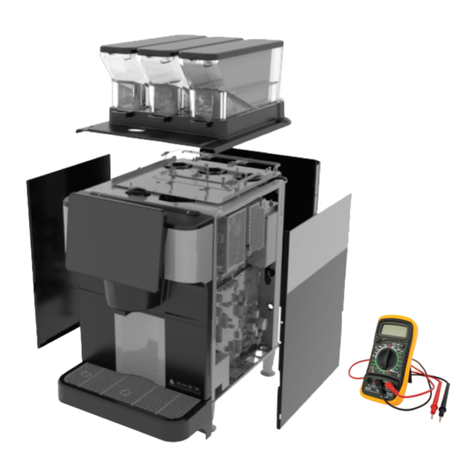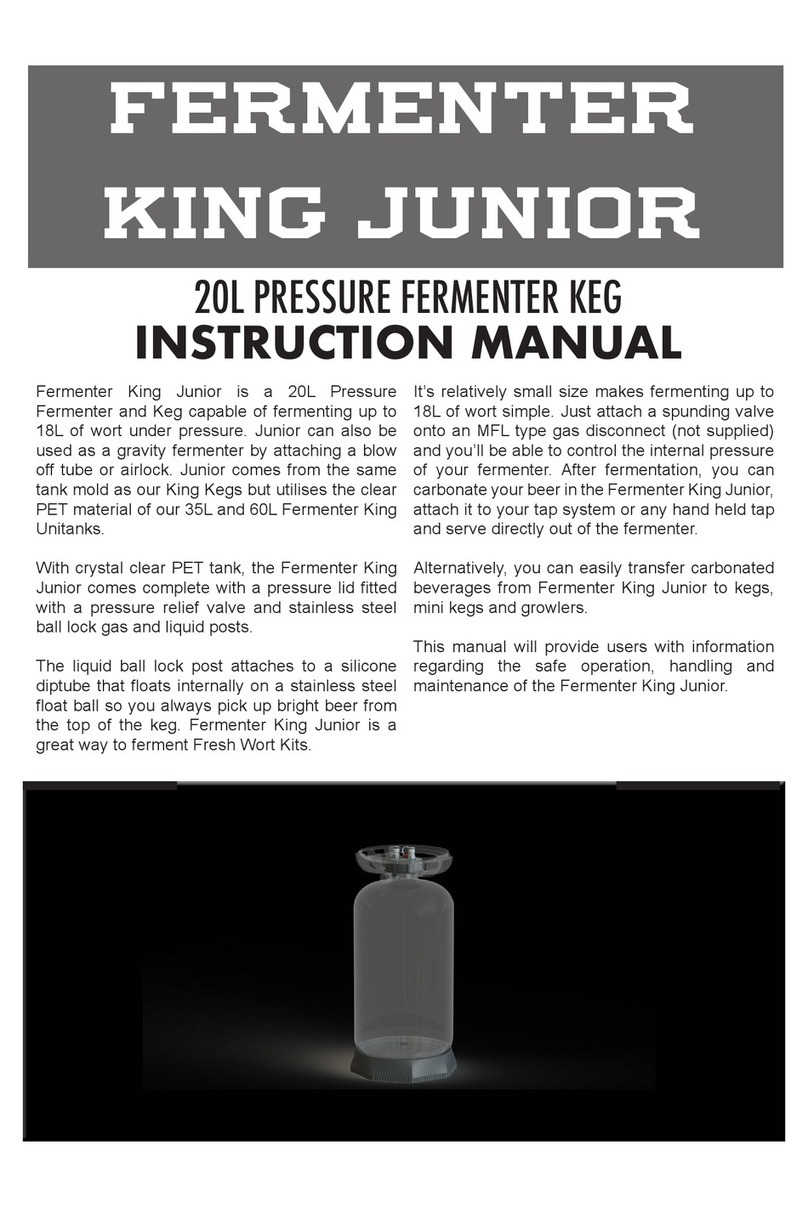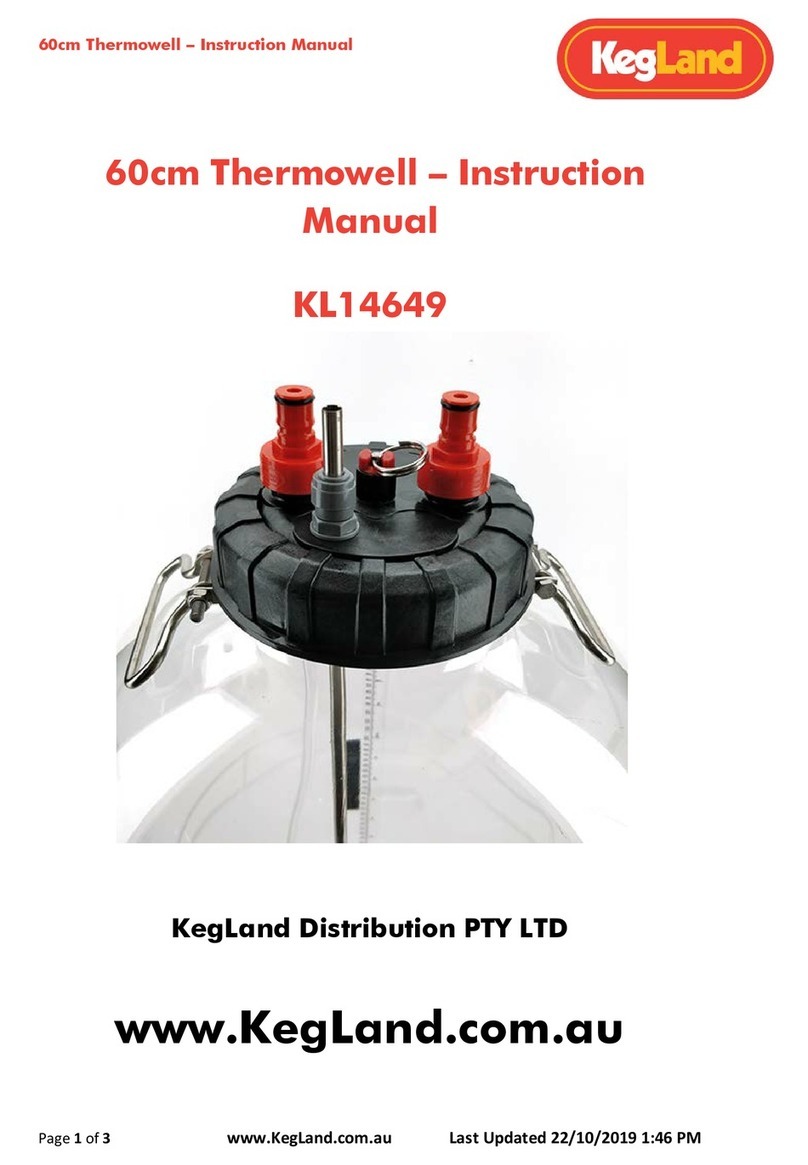
Fermenator G4 V2© Blichmann Engineering, LLC 2021
For replacement parts, visit: blichmannengineering.com/genuine-replacement-parts 3
CLEANING STAINLESS STEEL
For general cleaning of stainless steel, mild unscented detergents, PBW, or percarbonate-based cleaners are
excellent choices. Bleach should not be used to clean or sanitize stainless steel as it will corrode and pit them.
SANITIZING
Only when your equipment is clean, can you sanitize it.
All items that contact the wort or beer below 140F need to be sanitized.This includes the fermentor (including the lid), airlock,
rubber stopper, yeast rehydration or starter container, thermometer, funnel, spoon, and siphon etc. On bottling day, bottles,
caps, hoses etc. also need to be sanitized. Chemical sanitizers can be prepared in a bucket and used throughout the brew day.
Chemical sanitizers are by far the most common. Most can be used on metal, plastics and glass. Most do not require rinsing; a
good feature since your tap water, particularly well water, may contain small amounts of bacteria. Again, always follow the
manufacturer’s recommendations for concentration, contact time, and the need to rinse before use.
Five Star Chemical’s™ StarSan™ is one of the most popular sanitizers on the market. Always use according to the
manufacturer’s directions.
If you have a particularly tough stain, liked burned malt extract, stains, or other buildup, Barkeepers Friend (oxalic acid) works
very well to remove them from metallic surfaces.This product is available at your local grocery store.
AFTER USE CLEANING
For keeping your equipment clean and looking new, we strongly recommend cleaning immediately after brewing as soils and
residue will be much easier to remove before it dries. Never toss components in a bucket of cleaning agents“to clean tomorrow”
as these chemicals may damage the product if you exceed the recommended contact time.
Once you’ve thoroughly cleaned your stainless products, wipe them dry with a towel and let them air dry thoroughly. A clean
surface will instantly passivate once it is dry, leaving a durable corrosion resistant surface.
CLEAN IN PLACE (CIP)
The Blichmann CIP Spray Ball was specifically designed for use with homebrewing pumps and works great to quickly remove
heavy soil from the fermentor after fermentation. Please refer to the product’s manual for more information. Some surfaces and
components, like the lid seal and upper tri-clamp gaskets may need to be sanitized individually after a sanitizer wash is circulated.
Other attachments, including valves, carb stones, thermo-wells, and caps will need to be cleaned and sanitized individually by
soaking/scrubbing as needed.
WARNING: Do NOT use any cleaner or sanitizer containing chlorine such as bleach.This will pit and erode stainless steel.
If the ball valves ever begin to drip, remove the handle and tighten the packing nut under the handle. If this persists, replacement
valve seal kits are available through your retailer.
PASSIVATION
Passivation is a natural chemical reaction with the chromium used in stainless steel and oxygen in the air. As long as stainless steel
can react with oxygen, a‘passive’chromium oxide will form on the surface protecting the metal from corrosion. All of our products
have been passivated, but common manufacturing processes may leave free iron and an isolated area of corrosion may form. If
this happens, it is recommended to passivate the tank. This can be as easy as scrubbing the effected area with a scouring pad or
household chemicals can be used. Bar Keeper’s Friend (BKF) is very effective at maintaining a passive surface on stainless steel. It
aids in passivation of stainless steel and will help remove iron oxides. A routine scrub with BKF will keep the surface prepped for
years to come.
Thoroughly dry all seals and o-rings and store them in a plastic bag and place inside the tank for the next use. Be sure to remove
all the o-rings from the fittings to prevent from taking a“set”. Install the lid and V-band clamp (without seal) to prevent dust from
settling inside the unit during storage.
John Palmer also has a more in depth discussion about removing rust and how to passivate stainless steel at this link -
https://tinyurl.com/passivation
